Business
The Secret Weapon Agencies Don’t Want You to Know About
Published
2 years agoon
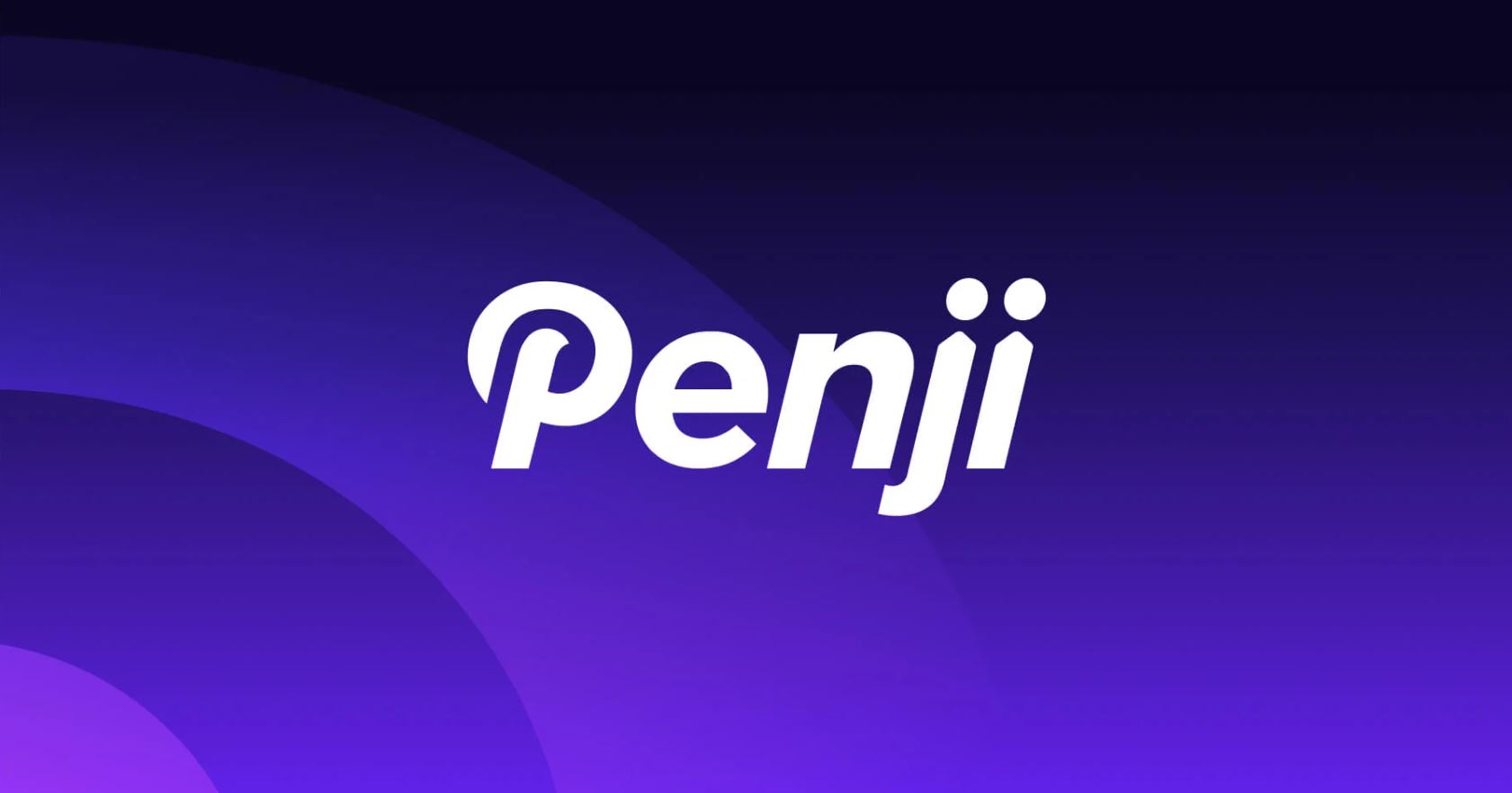
Your brand is a force to be reckoned with, but every time you need a new design—whether it’s for your website, social media posts, marketing materials, ads, etc.—you hit a wall. Maybe you’ve tried hiring freelancers, only to find that they’re unreliable, missing deadlines, or delivering work that’s just not up to your standards. Or you turn to design agencies and end up spending a fortune on designs that don’t even capture the essence of your brand.
Sound familiar?
Then there’s the option of doing it all in-house, but let’s be honest—your team is already stretched thin, or maybe this design work just isn’t their forte. Instead of focusing on growing your business, you’re bogged down with revisions, design miscommunications, and never-ending back-and-forths with both designers and clients (each of whom probably blame the other). It’s frustrating, time-consuming, and worst of all, it’s keeping your brand/your clients’ brands from looking their best.
If this is you, you’re not the only one. Let’s take a minute to explore why this is happening.
Where Modern Brands Get Stuck

You’d think that in today’s highly connected business world, getting top-notch design work done would be easy enough. But the reality is far from it. The sheer number of options out there is overwhelming—do you go with a freelancer, an agency, or build your own in-house team? Each path comes with its own set of challenges, and none of them are as straightforward as they seem. Just because there’s quantity doesn’t mean there’s quality.
Basically, more options = more complexity. And more complexity = less efficiency.
Finding a freelancer might seem like an easy, budget-friendly option, but how do you really know if they’re any good? There’s no easy way to vet them before hiring, and many have little to no experience in handling complex projects. Even if you do manage to find a talented designer, coordinating with them remotely can turn into a logistical nightmare.
On the other hand, if you have a solid in-house team, managing the design process becomes a full-time job in itself. Whether it’s developing a website, creating a mobile app, or launching a new marketing campaign, every detail needs to be just right. The more your company grows, the more complex your design needs become, and suddenly, you’re drowning in work—too many projects, too many people to manage, and no streamlined way to keep everything on-brand and on-schedule for each client.
When hiring full-time designers or even just popular freelancers, costs can rack up quickly. Before you know it, you’re paying multiple salaries just to get the bare minimum of what you need from a design team.
Running an agency today is complicated. So it’s 100% forgivable to need outside support.
Enter: Your Night & Shining Armor, Penji
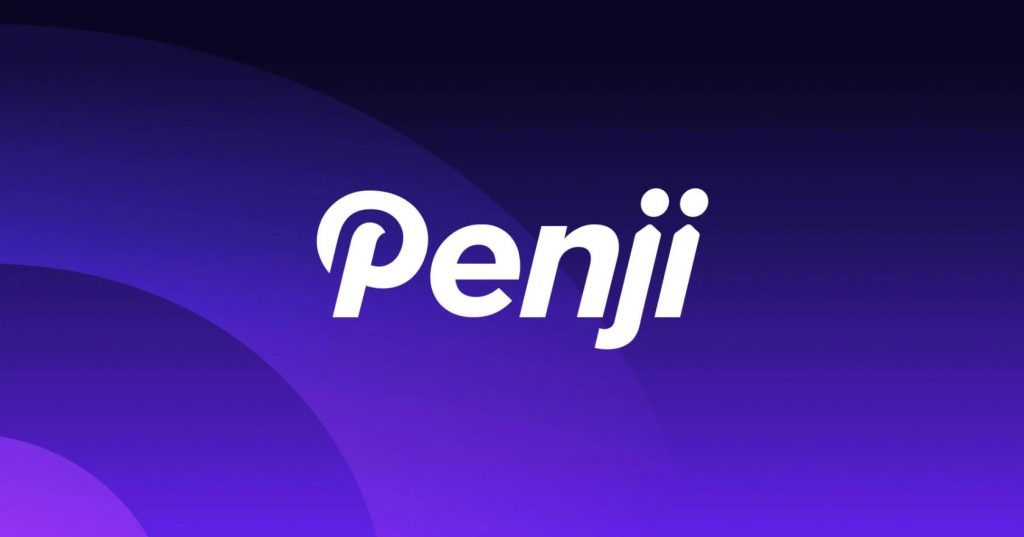
Penji is a graphic design service that runs on a subscription model, offering unlimited design projects for a flat monthly fee. Founded in 2017, Penji is tailored for businesses and agencies that need ongoing graphic design support without the traditional constraints of per-project fees or design contests. Unlike other creative platforms, Penji assigns a dedicated designer from their talent pool to each project, allowing for personalized service and continuous collaboration. Brands get a range of design services including branding materials, ads social posts, websites, apps, custom illustrations, presentations, and more.
You might think opting for a whole design team would break the bank, but it’s actually far more affordable than hiring a full-time designer (yes, we did the math). By subscribing to an unlimited design service, you not only cut costs dramatically but also avoid the endless task of sorting through freelancers who might not meet your expectations.
With this approach, you can finally say goodbye to:
- The frustrating cycle of hiring and firing designers year-round
- Missing critical deadlines because the work wasn’t delivered on time
- A disjointed brand identity that doesn’t represent your vision
- Accepting mediocre designs that feel rushed and uninspired
- Overburdening your in-house team with more design tasks than they can handle
How the Process Works
- Start a Design Project: The process begins when you create a design project by filling out a straightforward form. This form includes details about your design needs and allows you to attach relevant files. Penji encourages you to provide comprehensive information to ensure that the assigned designer has a clear understanding of your requirements.
- Get Assigned a Designer: Once your project is submitted, Penji matches you with a designer who they believe is best suited for your project. This designer will be your point of contact, and you can communicate directly with them throughout the process. The initial draft of your design is delivered within 24 to 48 hours.
- Review/Request Revisions: After receiving the first draft, you have the opportunity to review it and request revisions if needed. Penji’s approach ensures that you’re completely satisfied with the final product before it’s considered finished.
- Want to see how it works? Check out a free live demo.
Choosing a Design Package
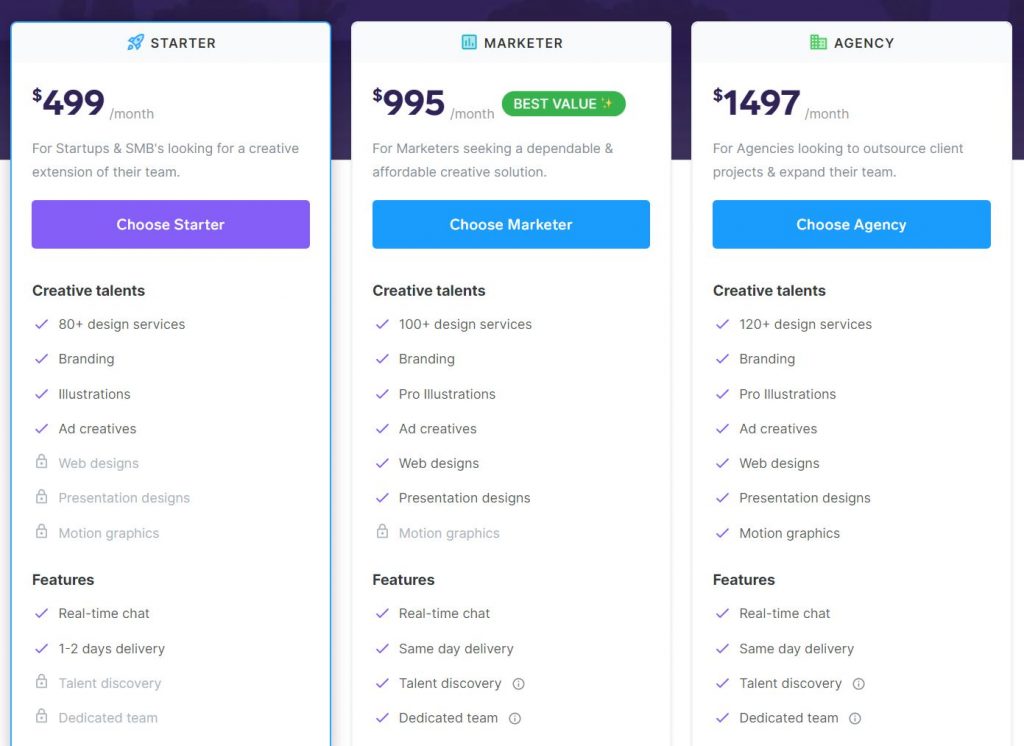
All the packages are laid out with monthly, quarterly, and yearly pricing. Starting at $499 per month for the Starter plan, you’ll be able to make unlimited graphic design requests with a 24-48 hour turnaround (Keep in mind, more complex projects like websites will take longer). If your design needs grow, you’ll have the Marketer and Agency packages to choose from.
What’s the Turnaround Time?
When using this design tool, you can typically expect to receive at least one draft by the next day. In fact, many users are pleasantly surprised to find three drafts ready for review within 24 hours. For comparison, most freelancers and design firms often take several days just to submit a single draft.
What’s impressive is the quality of the designs, especially considering the quick turnaround. This is largely because each project is handled by a different designer, giving you the advantage of having a virtual design team working on your requests simultaneously.
Using the Built-in Revision Tool

Penji has a built-in revision tool that lets you click anywhere on the design to leave a revision. It’s useful as it enables you to pinpoint what you want to change.
Even with the initial drafts being strong, you might still need some revisions. Typically, these revisions are turned around the same day or by the next day, depending on their complexity. For more involved revisions, you might be told it will take up to 24 hours, which is still a relatively quick process compared to other design services. One thing to note is that while the platform is efficient, it doesn’t offer real-time chat with your designer.
Designer Swap
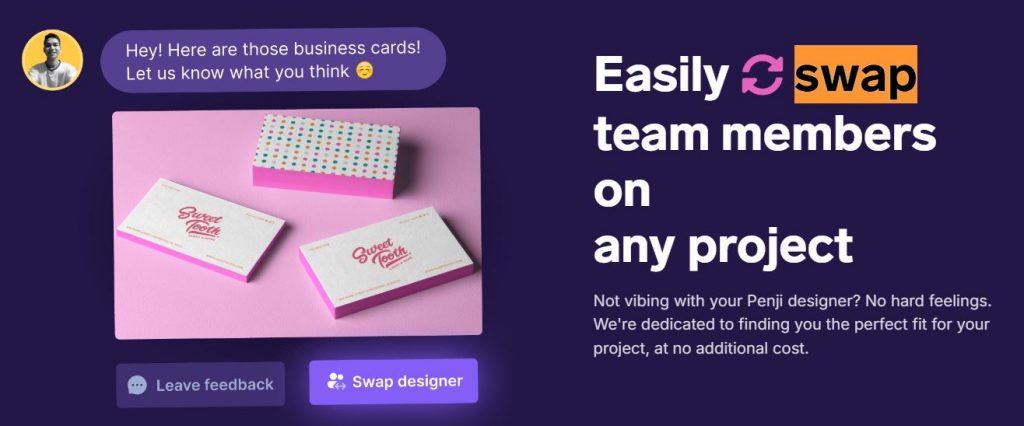
You may not always see eye-to-eye with a particular designer. If their take on a project just doesn’t feel right and you’ve tried revisions, Penji allows you to try a different designer at no cost (and no awkwardness).
Is Penji Right for You?
Penji is a robust solution for brands that require a steady stream of design work. Its subscription-based model, fast turnaround times, and the advantage of working with a dedicated designer make it a compelling choice for those who value efficiency and consistency in their design projects. However, the service may not be ideal for those who only need occasional design work or are seeking a broader range of creative services (eg. 3D animation).
If you’re tired of having a design workflow that’s not efficient enough, Penji offers an opportunity to simplify and get tailored support from a pro design team year-round.
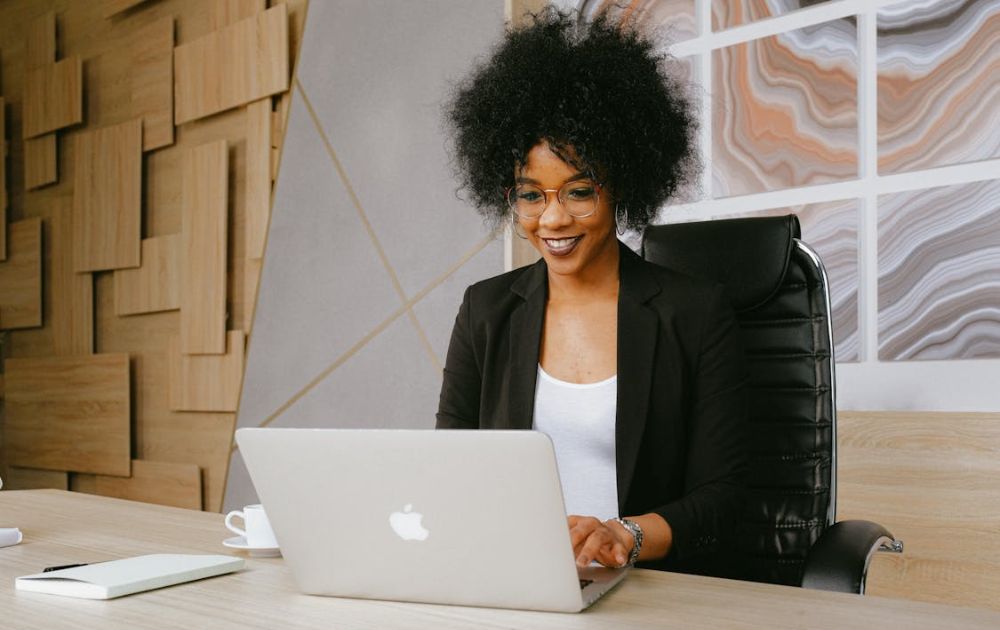
AI tools have evolved fast, and entrepreneurs now rely on them not just to automate tasks but to scale entire workflows. That said, it’s not surprising that many business owners are leveraging the power of cutting-edge technology. And this is where AI tools for entrepreneurs come in. Let’s look at what they are and a few examples you can check out.
1. Aomni Agent

Packed with powerful AI-driven features, Aomni Agent is a tool that can help you grow your company’s outbound pipeline by conducting research to give you new Ideal Customer Profiles (ICPs). With it, you no longer have to create account plans for each of your prospects, as the AI tool will do it for you.
Aomni Agent engages with your customers, provides support, automates routine tasks, and gives you real-time insights and analytics, among many other features. To know its pricing and additional information, you need to contact them directly through their website.
2. Pictory

A video creation tool, Pictory, can help you create engaging and professional videos in minutes. It uses AI that automatically generates videos from your text, images, and audio. This means you get excellent results even without any video editing skills.
You can use Pictory to generate videos from your blog posts, articles, and other text. It can also edit existing videos and add images, music, or text. It offers a free trial and three plans with subscription fees that range from $23 to $119 per month.
3. Zeda.io

Zeda.io has grown into a powerful AI-powered product operating system. With its 2.0 update, the platform now connects customer feedback, product strategy, roadmapping, and internal documentation into a single intelligent workspace.
Its AI engine analyzes thousands of customer inputs, from surveys to reviews to support tickets, to identify patterns, prioritize features, and suggest product improvements. What used to take days of manual synthesis now takes minutes. The updated version also includes AI-generated product briefs, automated roadmap updates, and integrations with popular tools like Slack, Notion, and HubSpot.
4. Slite Ask

Slite Ask is one of the most reliable AI knowledge-base assistants for teams. Instead of manually searching docs or old messages, entrepreneurs can simply “ask” a question and get an instant answer based on their workspace knowledge.
The AI scans company documents, policies, SOPs, and internal notes to deliver accurate responses without hallucinations. This makes onboarding smoother and speeds up decision-making, especially for remote or hybrid teams.
5. Credal.ai
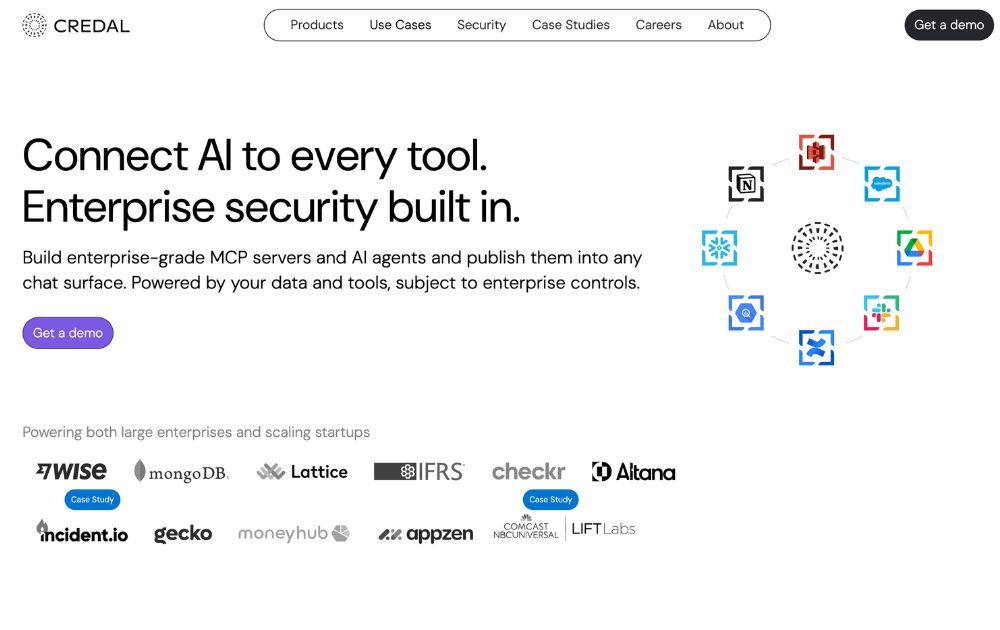
Keep your data safe with an AI tool that’s perfect for entrepreneurs. Credal.ai is a software that provides a secure environment for AI applications to run and monitors them for any potential security threats. This helps you protect your business’s sensitive data from unauthorized users.
Credal.ai protects your data from leaks, malicious codes, and unauthorized access. It has a free plan but with limitations, so to get the most out of this AI tool, a Team or Enterprise plan is recommended. Pricing starts at $500 per month.
6. Webscraping.AI
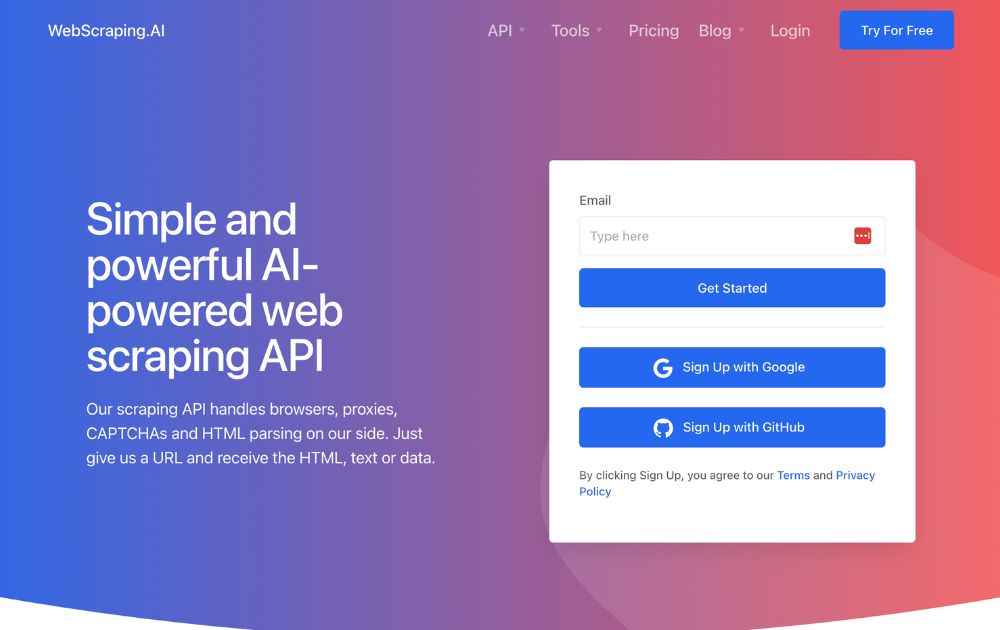
Web scraping is the process of extracting data from a website, such as stock prices, product details, company contacts, and many more. If you want access to this information, you’ll need Webscraping.AI. It is easy to use and won’t require you to have any coding or technical skills. All you need to do is enter the website you want to scrape, and the tool will automatically get the data from the website.
Webscraping.AI can help business owners make better decisions by providing accurate data to identify new opportunities. It can also help them make better decisions for their strategies. Pricing for this AI tool for entrepreneurs ranges from $29 to $249 per month, with no hidden fees.
7. ValueProp.dev
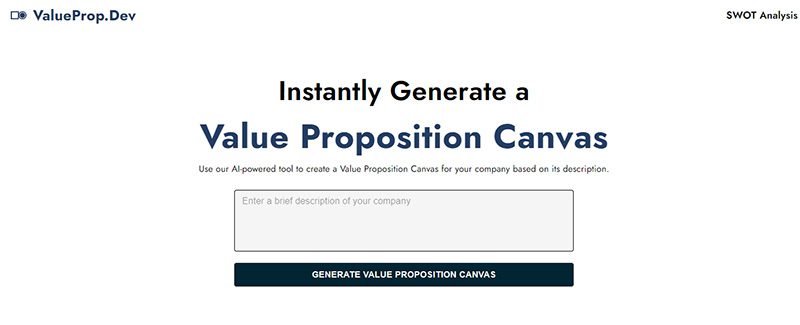
A value proposition is a statement that tells your customers what your product or service is all about. This can be tricky, but worry no more, as ValueProp.dev is an AI tool for entrepreneurs created explicitly for this. It uses machine learning to analyze your customer data to generate unique value propositions for you.
ValueProp.dev can help you improve your business by generating value propositions that significantly increase customer acquisition, retention, and sales. It is free for up to three value propositions, but they also have premium plans for more options and features. Pricing starts at $29 per month.
8. Lovo.ai
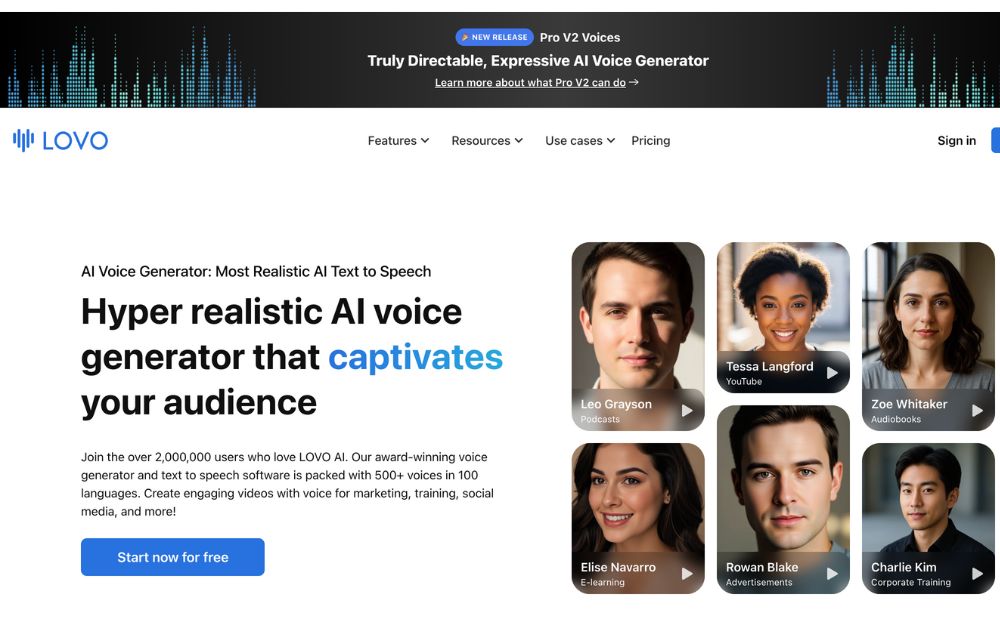
A text-to-speech and text-to-video platform, Lovo.ai can help you create engaging and informative content for your content marketing strategies. It uses AI to generate realistic and human-loke voiceovers, videos, avatars, and others. You can extend your reach globally as this tool can do voiceovers and videos in more than 140 languages.
Lovo.ai can help you increase your engagement, improve your SEO rankings, and boost conversions. You can try their free plan to give you an idea of what the tool can do for you. But for more features, a paid plan that starts at $19 per month can provide more value.
9. Zigpoll
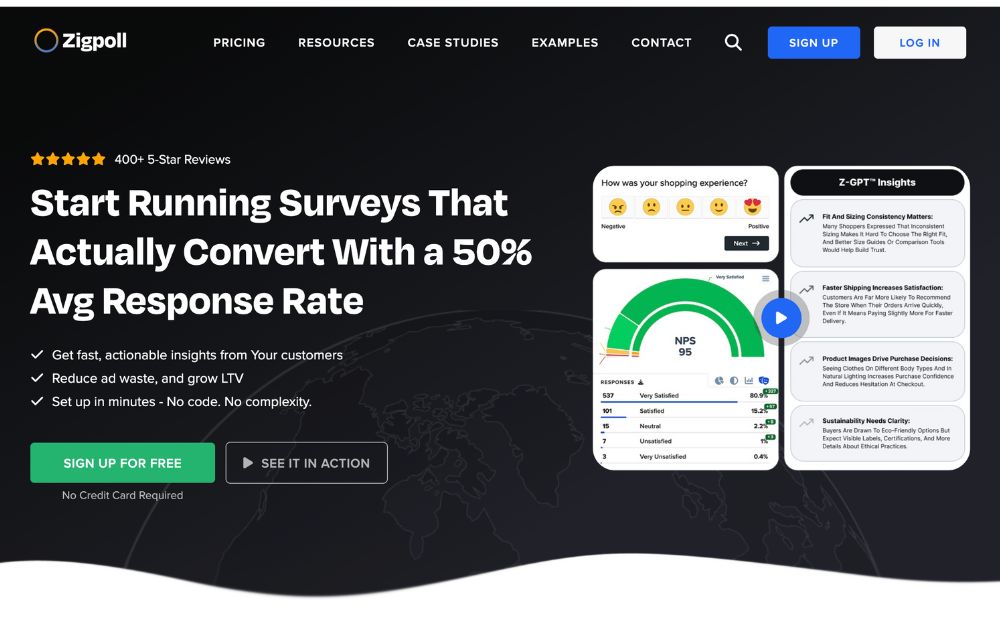
Zigpoll remains a solid choice for collecting customer insights, but its capabilities have expanded over the past two years. Today, Zigpoll uses AI to generate survey questions, summarize responses, detect sentiment, and even segment customers automatically.
Entrepreneurs can embed polls on websites, email campaigns, or post-purchase pages, then let Zigpoll’s AI categorize feedback into actionable insights. This helps brands quickly spot trends, product issues, or opportunities for upselling.
10. Pitches.ai

Are you looking to increase your business funding? Then creating the perfect pitch deck should be your priority. You can easily and quickly do this with Pitches.ai. It is an AI-powered tool for entrepreneurs to develop and refine pitch decks.
Pitches.ai analyzes pitch decks and gives you feedback on their structure, persuasiveness, and clarity. This gives you a higher probability of success. It offers four premium plans with prices ranging between $95 to $1,195.
Conclusion
Artificial intelligence is slowly becoming popular among business owners. Thanks to their many advantages, it’s no surprise that many will be using the technology from now on. These AI tools for entrepreneurs are a great example, and you should check them out today.
Featured Image Credit: Photo by Anna Shvets from Pexels
Business
What’s the Best Graphic Design Service for Education & eLearning?
Published
4 days agoon
November 13, 2025
TLDR: Best unlimited graphic design services for education and eLearning: ideal for quick turnaround, high-quality designs, and affordable pricing.
84% of communication is visual. Thus, for a world of education and eLearning, graphic design is imperative in the creation of projects for students and complex concepts. From interactive course materials to compelling marketing, strong visuals drive success. But finding a reliable, affordable design partner is tough.
Thus, it’s hard to come by a reputable service that can provide all your needs at a reasonable cost when it comes to project designs, turnaround expectations, anticipated quality and budgetary allowances.
But never fear! We’ve vetted what’s best for you!
1. Penji
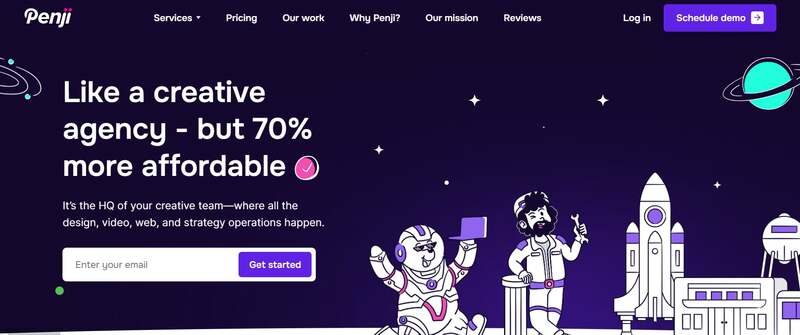
If you’re looking for the best for education and eLearning purposes, Penji has the best overall value as quality, turnaround time and offers have placed it at a reasonable flat fee monthly.
Penji is an unlimited graphic design service that works as you would expect – unlimited – which means that for a flat fee monthly, you’ll have access to your very own team of designers.
Features:
- A Well-Qualified Team of Designers: Whether you need e-learning interactive designs to course visuals (infographics, presentations) Penji’s graphic designers make everything visually appealing to an academic audience.
- Turnaround: Average turnaround is about 24-48 hours so you can keep churning out material for course creation or marketing.
- Unlimited Revisions: As many times as needed to get your requested project right.
- Accessibility and Submission Portal: Penji comes with a site that’s fairly user-friendly for ease of access in submissions, critiques and conversations.
2. Kimp
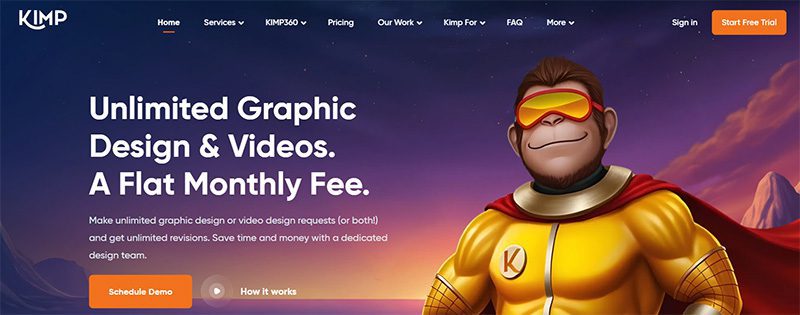
If you need an unlimited source and don’t mind one that’s second best, Kimp boasts graphics and even video. Consider this option with caution – some reviews do mention turnover can vary and this wouldn’t be the best reliable option if you’re on a time crunch for every project.
Features:
- Wide Range of Services: Kimp provides both graphic design and video services, offering a versatile creative solution.
- Dedicated Designers: You’ll work with a group as your designated team so you get to know your specific creators.
- Easier Feedback Opportunities: Feedback can be given on the Kimp site for creations with visual access as to what you want changed.
3. Design Pickle

Design Pickle was one of the first unlimited graphic design services to go for an unlimited design game. This is helpful if you need custom illustrations or a presentation created for a polished look in any educated (or business) endeavor – higher tier subscriptions go with probability – but in all other worlds, it has more value than other sites when stacked against one another.
- Unlimited revisions to get the exact illustrations or graphics needed for presentations or other projects.
- Quick turnaround times to keep on schedule with 48 hour returns.
- Global Design Team: Boasts a diverse team of professional designers, offering expertise across multiple industries to match various client needs.
4. ManyPixels
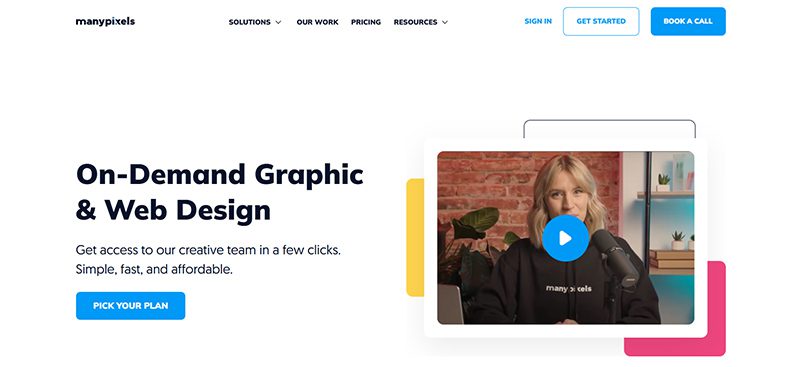
ManyPixels is another reputable source that has unlimited graphic designs services but assignment transparency which means you’ll have one assigned designer to you, but they’re a bit more transparent with regards to who may (or not) be able to help you but will get back to you with good timing.
- One Dedicated Designer: ManyPixels is a company that does not have unlimited designs, however you’ll have one assigned who will know your needs better than most.
- Good Turnaround Time: Generally they’ll turn around assignments within 1-2 days after submission regardless of simplicity/complexity.
- Reliable Designs: Good for marketing or simple visuals/templates you’d want to use for educational continuity but they may not give as specialized feedback as you’d think.
Cover Image Credit: Photo by Fox on Pexels
Business
What are the Best Graphic Design Services for Fashion Brands?
Published
5 days agoon
November 11, 2025
For many businesses, graphic design means conversions, credibility, and brand recall. So, if you’re in the fashion industry, you also need to have significant visual assets if growth is your priority. If you need help finding the best graphic design service for your fashion brand, we made a list of the top five:
Penji
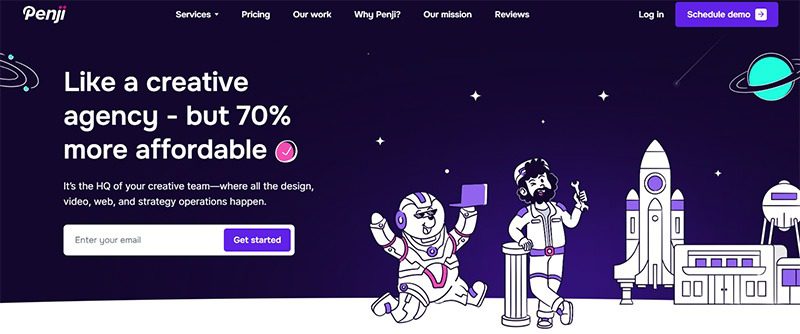
An on-demand graphic design platform, Penji offers unlimited graphic design services for fixed monthly fees. This allows you to send as many requests for lookbooks, catalogs, packaging designs, and many other marketing materials for less. Its team of top-notch designers assures you of consistent and high-quality work worthy of your fashion business.
Kimp

Built to support the creative needs of many businesses, including fashion, Kimp is another platform that offers unlimited design requests. It can craft product mockups, campaign visuals, packaging designs, and social media graphics, among others. It also provides video editing services, making it ideal for fashion companies that run reels, seasonal promos, or behind-the-scenes edits.
Designity
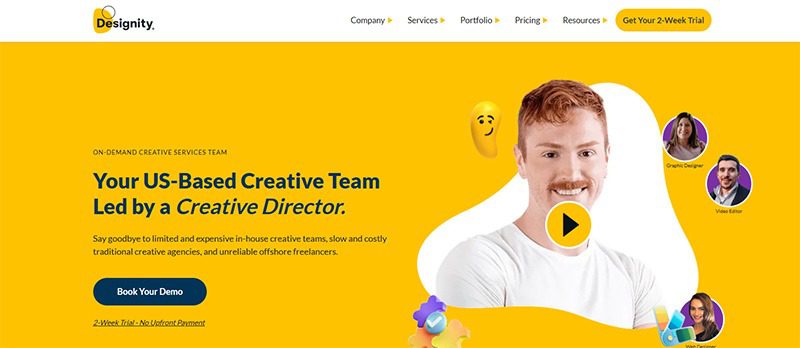
Combining agency-level creative direction with flexible access to US designers, Designity suits fashion brands that need polish, strategy, and scalability. They can provide you with social media graphics, online ads, label designs, logo and branding, and magazine layouts, among other key services.
Flocksy

If your business needs video editing, copywriting, and voice-over services, then Flocksy is the best graphic design service for your fashion brand. In addition, it also offers custom illustrations, packaging design, infographics, and many other design services. It operates on a flat-rate pricing model, making it a more cost-effective option than hiring freelancers or working with expensive agencies.
Reel Unlimited

With its predictable pricing and wide array of graphic design services, Reel Unlimited is an excellent design solution for fashion brands. Like many on this list, it offers unlimited design requests and fast turnaround times, making it the ideal option for those with tight schedules and limited budgets.

What’s the Best Graphic Design Service for Beauty & Wellness Brands

10 Best AI Tools for Entrepreneurs

Our Top 10 Video Editing Tools for Smarter Content Production

What’s the Best Graphic Design Service for Education & eLearning?

What are the Best Graphic Design Services for Fashion Brands?

How TikTok and Instagram Track You Using In-App Browsers

What’s the Best Graphic Design Service for Marketing Agencies?

Top 10 Tablets to Use in 2025

Our Top 10 Video Editing Tools for Smarter Content Production

How TikTok and Instagram Track You Using In-App Browsers

Top 10 Free and Paid Employee Communication Tools

10 Best AI Tools for Entrepreneurs

10 Best Photo Editing Apps for Personal and Business Use in 2026

What’s the Best Graphic Design Service for Healthcare Brands?
Trending
- Technology3 days ago
Our Top 10 Video Editing Tools for Smarter Content Production
- Business3 days ago
10 Best AI Tools for Entrepreneurs
- Business5 days ago
What are the Best Graphic Design Services for Fashion Brands?
- Business4 days ago
What’s the Best Graphic Design Service for Education & eLearning?
- Uncategorized3 days ago
What’s the Best Graphic Design Service for Beauty & Wellness Brands



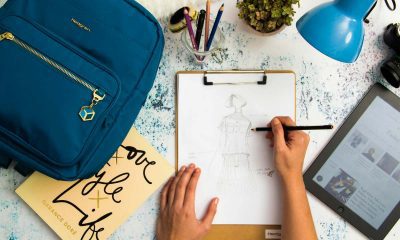
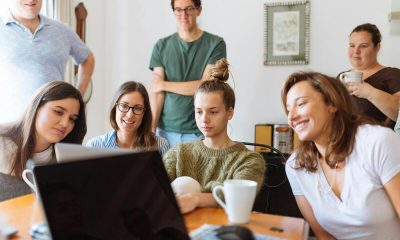
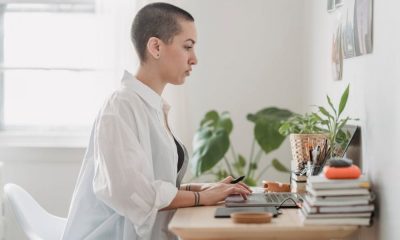
Priya nallathambi
April 22, 2021 at 2:59 am
We would like to add our product too. Please let us know your process.
Elena Wilson
January 28, 2022 at 6:33 am
This was the kind of thing I was searching for, truly accommodating, and incredible work done. Continue to share incredible substance like this.
Kathleen Peterson
September 29, 2022 at 4:21 pm
Penji is a great choice for businesses that need reliable and affordable graphic design services.